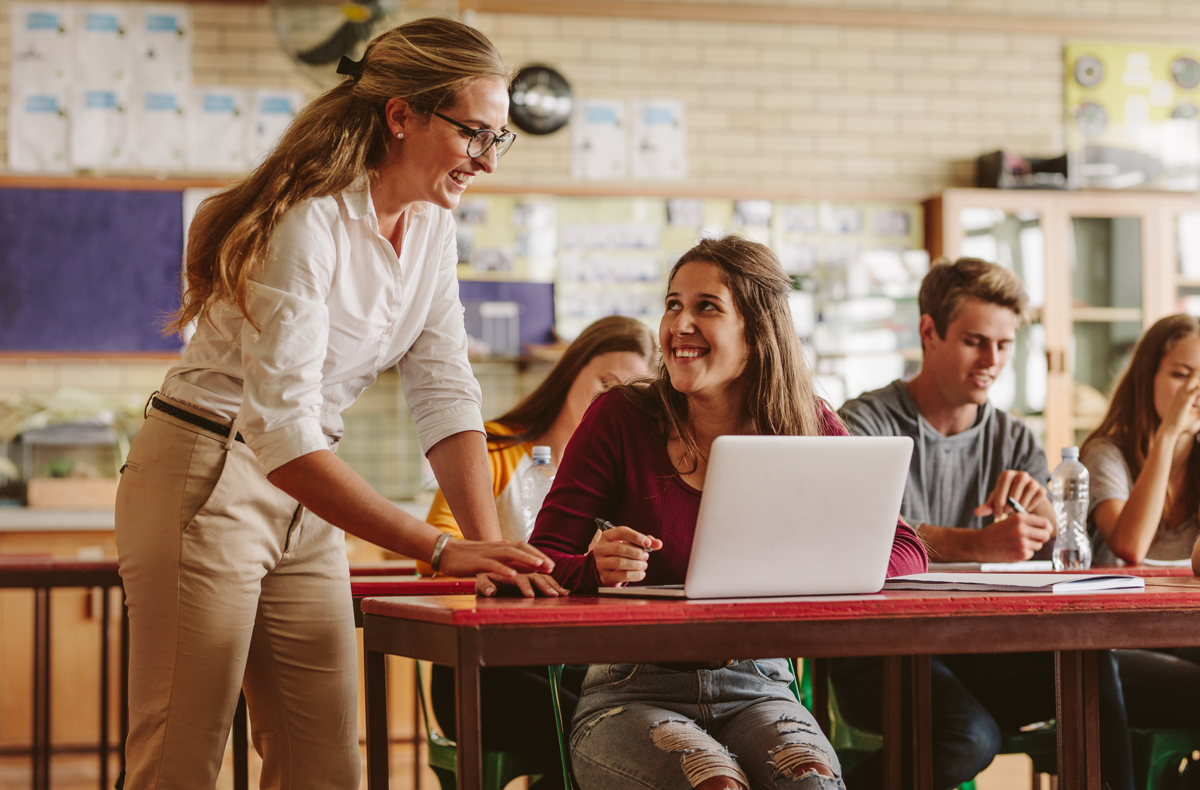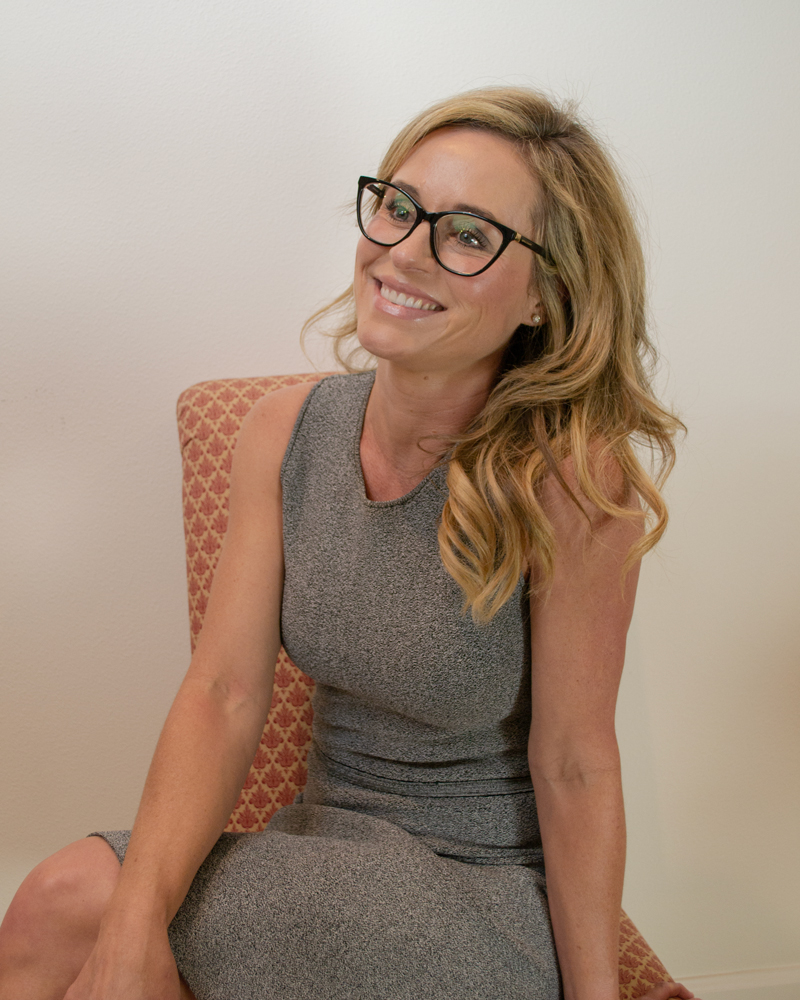
August 23, 2023 1:35 pm
The era of information scarcity is long gone, leaving room for a new dawn of student-led inquiry, exploration, critical thinking, and discovery. Are you ready for it?
Technology is radically changing how students communicate, collaborate, and create. Their small devices are an extension of their physical selves and give them impressive control over their daily lives. They stream television shows and movies, build music playlists for every mood, and order food to be delivered. This technology-rich reality stands in stark contrast to my experience growing up. If I wanted to watch Friends, I had to be on the couch at 8 o’clock on Thursday nights. I strategically timed bathroom breaks for commercials. And at the end of every season, I wondered, “Will Ross and Rachel finally end up together?” As a viewer, I had no control over my experience.
Watching my two teenagers engage with media is radically different. They decide what they watch, when they watch, where they watch, and how much they watch. They have total control over the media they consume. Despite this new reality, young people spend their days in classrooms that operate like network television. Like it or not (need it or not), all students are getting the same information at the same time. This disconnect between their experience at school and their lives beyond the classroom likely contributes to the high number of students who report negative feelings associated with school (Moeller, Brackett, Ivcevic &White, 2020).
Technology is permeating every aspect of society and fundamentally changing how we engage with information and each other. Yet, many classrooms still function in much the same way they did 20 years ago. Even the addition of computers and tablets in classrooms has not radically changed traditional approaches to teaching and learning. Many teachers still spend their days at the front of the classroom disseminating information. It made sense 100, 40, or even 20 years ago for teachers to dedicate significant time to transferring information. They and the textbook were the sole sources of information in a classroom. However, students today can access unlimited information in myriad formats online. This should have a transformative impact on our approach to educating young people. The era of information scarcity is long gone, leaving room for a new dawn of student-led inquiry, exploration, critical thinking, and discovery.
However, to truly transform education, educators must ask themselves, “What is my fundamental purpose in the classroom?” The way they perceive their value shapes their teaching methods. If they see themselves merely as experts, they gravitate toward one-size-fits-all, teacher-led, teacher-paced lessons. This whole group approach to teaching fails to acknowledge learner variability or meet the diversity of needs, abilities, language proficiencies, learning preferences, and interests in a classroom. Such a teacher-centric approach also requires the teacher, not the students, to do the lion’s share of the cognitive work. Instead of facilitating active learning, they spend their time at the front of the classroom, presenting information, unpacking complex concepts, and modeling processes and skills in the form of mini-lessons or lectures and relegating students to the role of passive observers.
In an era dominated by technology and advancing AI, teachers must recognize their irreplaceable value lies in their inherent humanness. This includes their ability to listen, observe, empathize, and organically respond to student needs. By contrast, technology excels at disseminating information. One can read a text, watch a video, listen to a podcast, or converse with an AI chatbot to acquire knowledge on various subjects. Moreover, when individuals engage with digital content, they have greater control over their learning experience. They control the pace at which they consume and process information. They can manipulate digital resources in ways that make the information more accessible. For example, students reading an online article can expand the size of a text and look up the definitions of unfamiliar words. When watching a video, they can pause, rewind, or rewatch as needed and add closed captions. They can even adjust the speed of a video or podcast to ensure the presentation of information isn’t too fast or too slow. If technology excels at transferring information, why would teachers spend their limited time with students talking at them?
Teachers can lean on technology to shoulder some of the burden of “covering content,” so they can spend their precious time with students focused on the human side of this work. If teachers leverage technology strategically and use blended learning models to architect student-centered learning experiences, they can embrace their role as facilitators of learning. As facilitators, their focus is working alongside individuals and small groups of learners, supporting them as they work to comprehend complex concepts and apply specific strategies and skills. That way, teachers can effectively differentiate and personalize learning for students to ensure they are all making progress toward firm standards-aligned learning goals.
To free themselves from the front of the room and embrace their role as facilitators of learning, teachers need a more robust and resilient set of technology-enhanced instructional models. Blended learning models combine active, engaged learning online with active, engaged learning offline. They strive to fundamentally shift the focus and locus of control in the classroom from teacher to learner. Teachers in traditional classrooms can use the range of rotation models (e.g., station rotation, whole group rotation, flipped instruction, and playlist) to design student-centered learning experiences that allow students more control over the pace and path of their learning.
These blended learning models also position teachers to work directly with individuals and small groups of learners to differentiate instruction and modeling sessions, provide real-time process-based feedback as students work, conference with students about their progress, and conduct side-by-side assessments. The shift from whole group to small group or individual interactions allows teachers to focus their energy and talents on meeting every student where they are in their individual learning journeys, which is critical if we want to provide an inclusive and equitable learning experience.
When educators adjust their mindset, recognizing their value not just as fountains of knowledge but as facilitators of learning, a transformative change begins. This transformational shift is bolstered by blended learning models, which allocate time and space for direct, individualized interaction between teachers and learners. These models don’t just alter the way teachers design and facilitate learning; they redefine the student experience.
Historically, traditional education has confined students to the sidelines as passive observers and recipients of information. They were vessels to be filled rather than explorers charting their own course. However, blended learning models shift control to learners, positioning them as active agents driving the learning. This demands they move beyond simply absorbing facts and work to make meaning in concert with their peers. The shift to student-centered learning signifies a shift from mere retention to reflection, application, and creation. As active agents, students develop the skills and confidence to explore, discover, and create. Ultimately, the purpose of reimagining teaching and learning is to produce not just knowledgeable individuals but critical thinkers, problem solvers, and lifelong learners.
The shift to student-centered learning is a gradual one. Navigating such an environment demands a higher cognitive and social investment from students compared to traditional teacher-led settings where the educator shoulders most responsibilities. However, the dividends of this evolution are invaluable. Students emerge as “expert learners,” characterized by motivation, resourcefulness, strategy, and self-awareness. They become adept at recognizing their strengths, limitations, areas of growth, and confidently advocating for their needs. For teachers, this approach reignites passion and provides a deeper sense of purpose. As we face a time where many educators are stepping away from their roles and students are bracing for a dynamic world and job landscape, adopting this paradigm shift becomes imperative. In an era when educators are leaving the profession in droves, and students prepare to enter a rapidly changing world and job landscape, this shift is imperative.

Dr. Catlin R. Tucker is a best-selling author, keynote speaker, international trainer, and professor in the Masters in the Arts of Teaching Program at Pepperdine University. She taught for 16 years in Sonoma County, where she was named Teacher of the Year in 2010.
Catlin has written a series of books on blended learning including, The Shift to Student-led, The Complete Guide to Blended Learning, UDL and Blended Learning: Thriving in Flexible Learning Landscapes, Balance With Blended Learning, Blended Learning In Action, Power Up Blended Learning, and Blended Learning In Grades 4-12 . In addition to her books on blended learning, Catlin writes an internationally-ranked blog and hosts a podcast called The Balance.
Catlin earned her BA in English literature from the University of California at Los Angeles. She earned her English credential and Masters in Education at the University of California at Santa Barbara. In 2020, Catlin earned her doctorate in learning technologies at Pepperdine University, researching teacher engagement in blended learning environments.
Catlin is active on Twitter @Catlin_Tucker and Instagram @CatlinTucker.